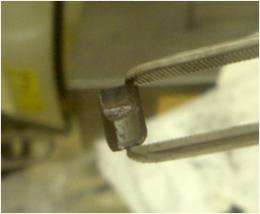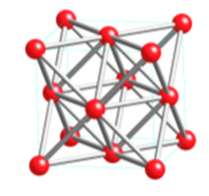Research provides new insights into actinide

(Phys.org) -- A team of DOE researchers from the Laboratory, Lawrence Berkeley and Los Alamos national laboratories and SLAC National Accelerator Laboratory, studying the fundamental properties of the actinide elements, has significantly advanced the understanding of the electronic structure of elements that have electrons occupying f-orbitals.
Using a state-of-the-art, synchrotron-based X-ray spectroscopic tool known as resonant X-ray emission spectroscopy (RXES), the team measured X-ray spectra for a large number of uranium (U) and plutonium (Pu) intermetallic compounds. (The actinides include the 15 metallic chemical elements with atomic numbers from 89 to 103, actinium throughL awrencium.)
The results show that the actinide atoms in many of the intermetallic compounds and pure a-phase uranium and plutonium metals exhibit "multi-configurational" electronic structures. Such structures cannot be described as a single state with a fixed number of f-orbital electrons; rather, they must be described using a mixture of states with different numbers of f-electrons (for Pu, f4, f5, f6; for U, f1, f2, f3).
The 5f electrons in U and Pu sit on the edge between being strongly bonding with ligand spd-states (itinerant electrons) and residing close to the nucleus (localized electrons). The unusual properties of these elements and their compounds (the six different allotropes of elemental plutonium) are widely believed to depend on f-orbital occupancy and the degree of electron delocalization; however, before now, there has been no way to quantitatively determine these parameters.

The new results provide that means, and should provide a strong experimental basis for building a new framework for understanding the behavior of strongly correlated electrons in actinide materials.
LLNL's Condensed Matter and Materials Division researchers Mark Wall and Patrick Allen contributed to the study.
The research appears in the June 26 issue of the journal, Proceedings of the National Academy of Sciences.
Journal information: Proceedings of the National Academy of Sciences
Provided by Lawrence Livermore National Laboratory



















